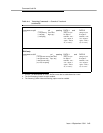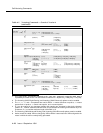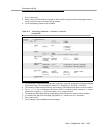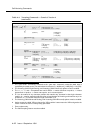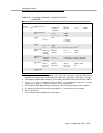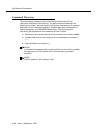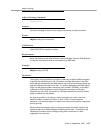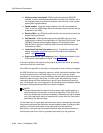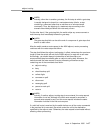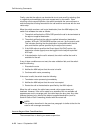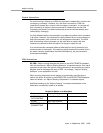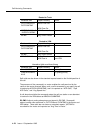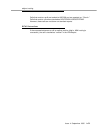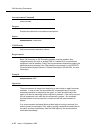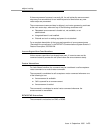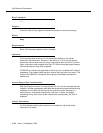
adjunct routing
Issue 4 September 1995
A-17
NOTE:
Actually, other than to another
goto
step, the first step to which a
goto
step
is usually designed to branch is a nontreatment step (that is, a step
containing a command other than a
wait-time
or an
announcement
command). Thus, the skipping of a treatment step according to the
scenario described just before this note rarely occurs.
On the other hand, if the
goto
step fails, the switch skips any
announcement
or
wait-time
step that
immediately
follows the
goto
step.
NOTE:
The
goto
step that fails can be at the end of a sequence of
goto
steps that
branch to each other.
After the switch sends a route request to the ASAI adjunct, vector processing
continues with the vector steps that follow.
The step that follows the
adjunct routing
step, in effect, determines the
maximum
length of time the switch will wait for the ASAI adjunct to reply with a call route.
Accordingly, you should always include either a
wait-time
step or an
announcement
step immediately after an
adjunct routing
step. Moreover, the
switch cancels the route request if vector processing encounters a step
containing one of the commands that follow:
■
adjunct routing
■
busy
■
check-backup split
■
collect digits
■
converse-on split
■
disconnect
■
messaging split
■
queue-to main split
■
route-to
NOTE:
Actually, if another
adjunct routing
step is encountered, the route request
information is not lost. Although the initial route request is cancelled, a
second route request is sent, and this route request includes the same
information included in the first route request.
If a valid call route is received by the switch before one of the vector commands
in the previous list is executed, the switch routes the call to the destination
specified by the adjunct route. Otherwise, the route request is terminated without
affecting vector processing.



